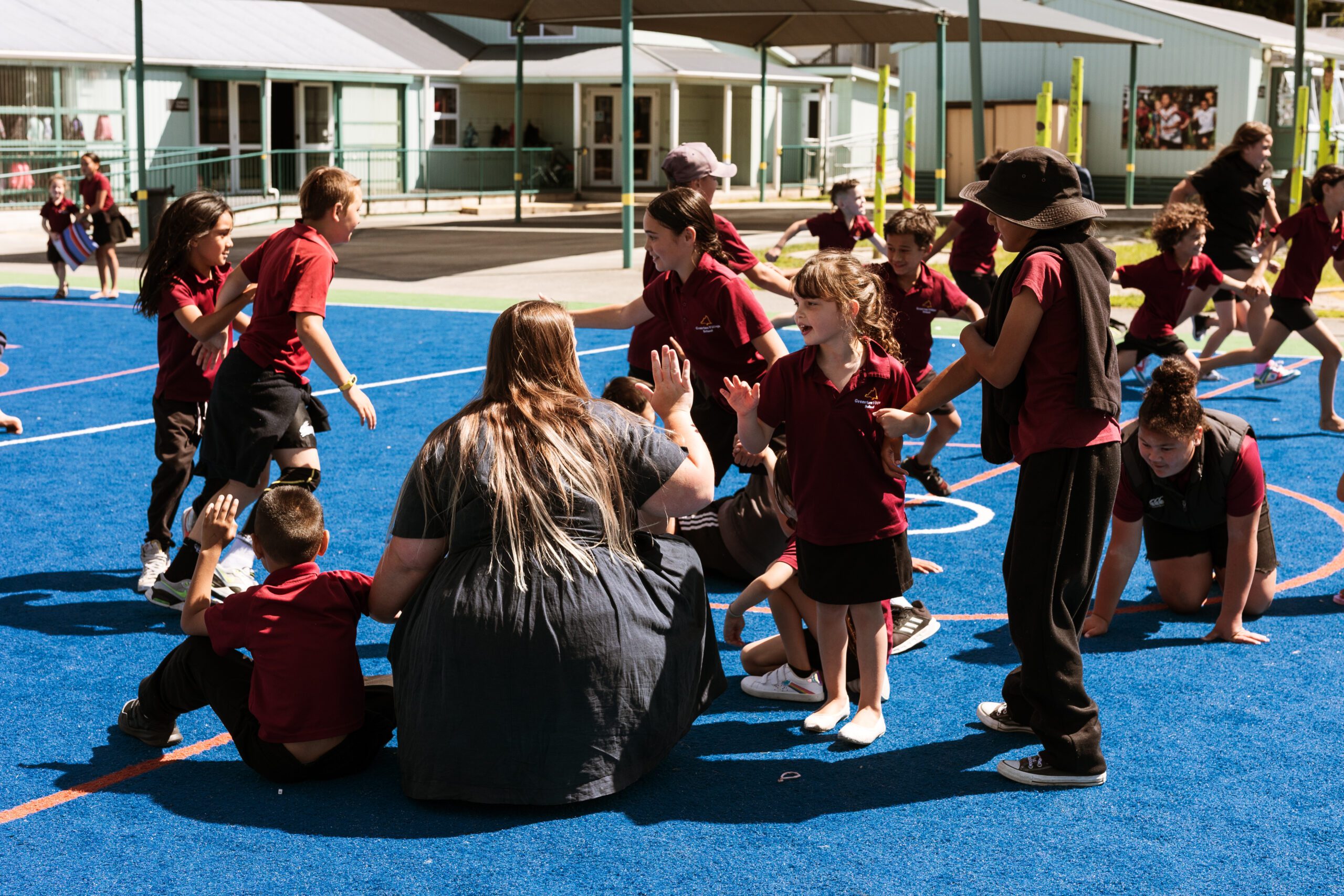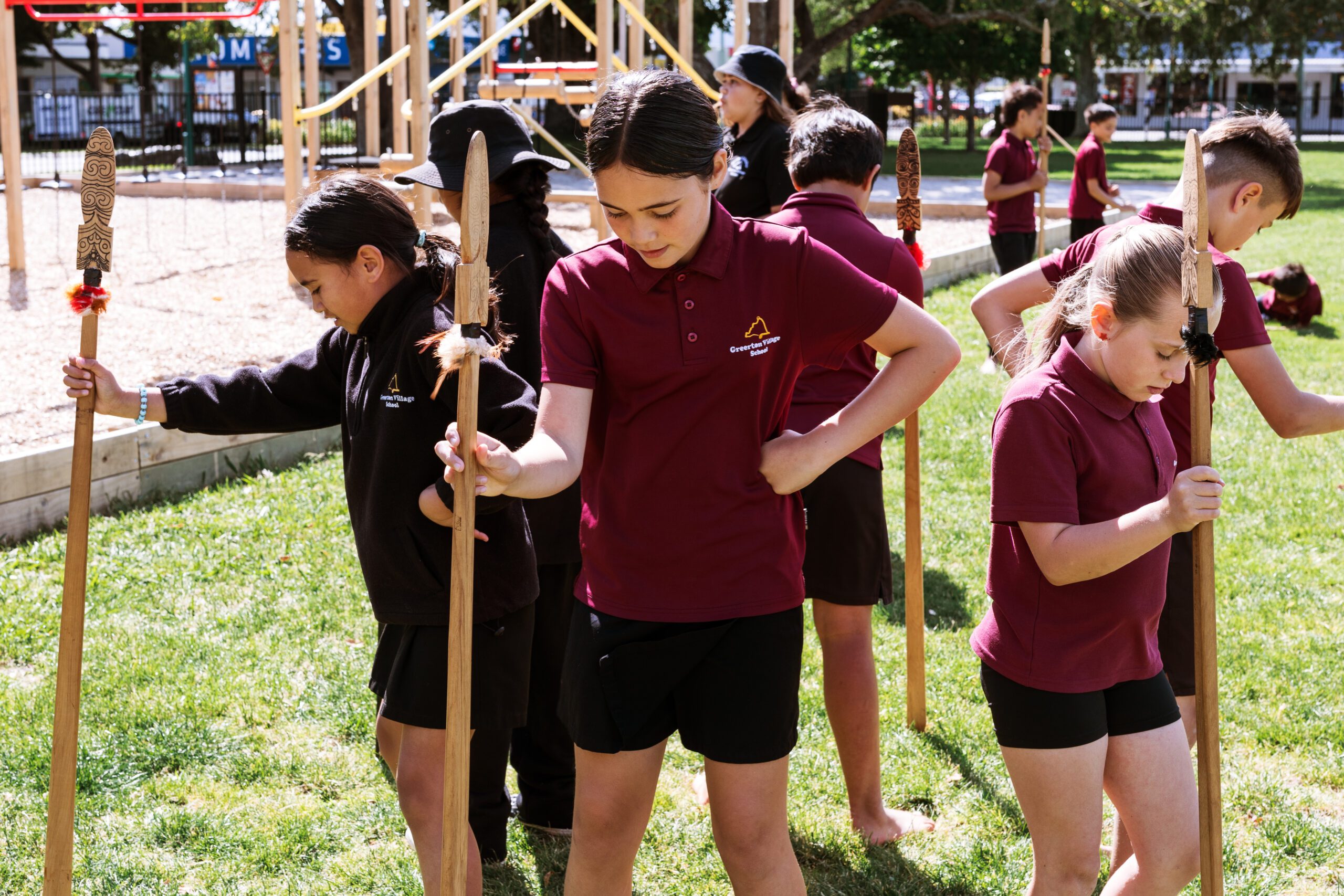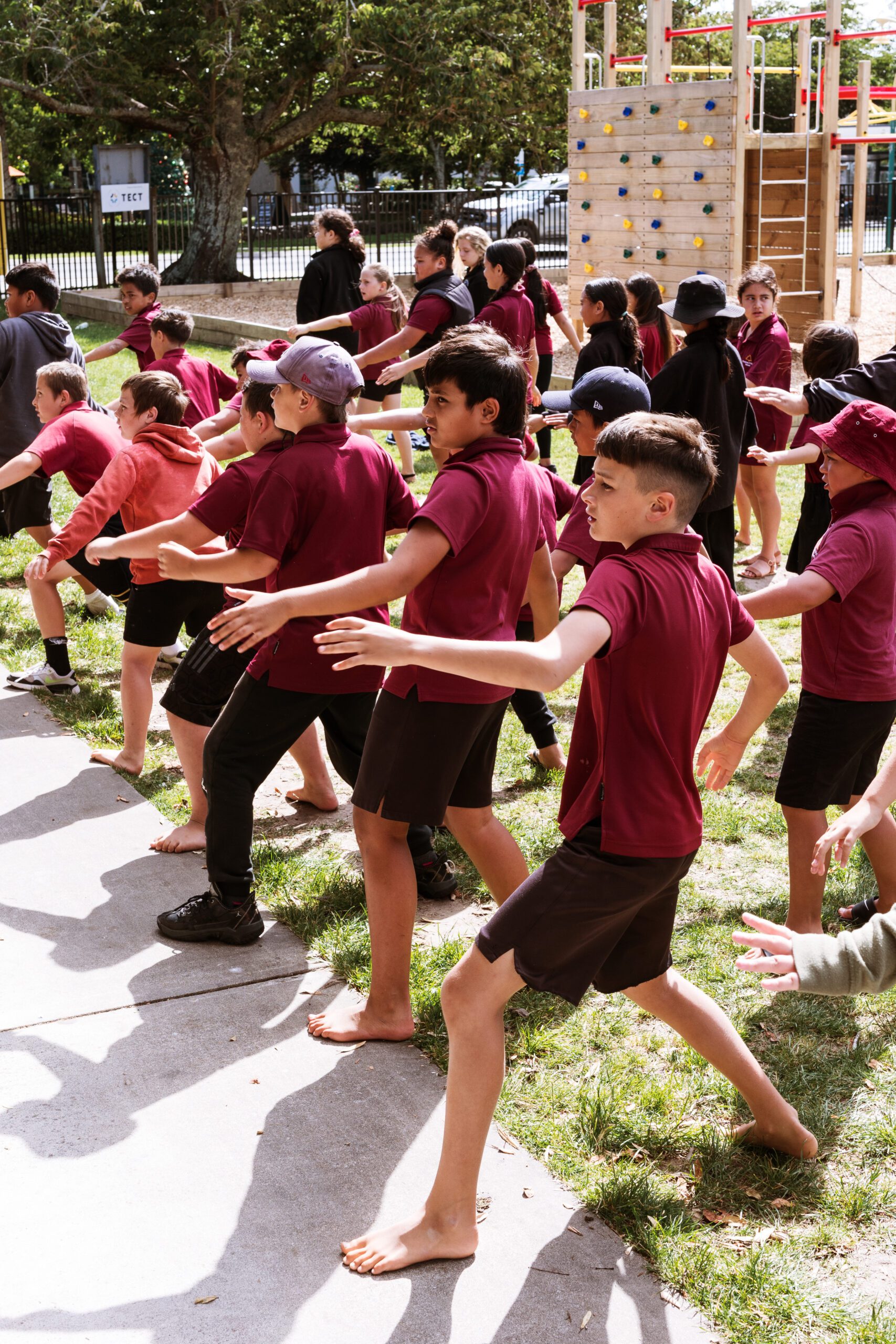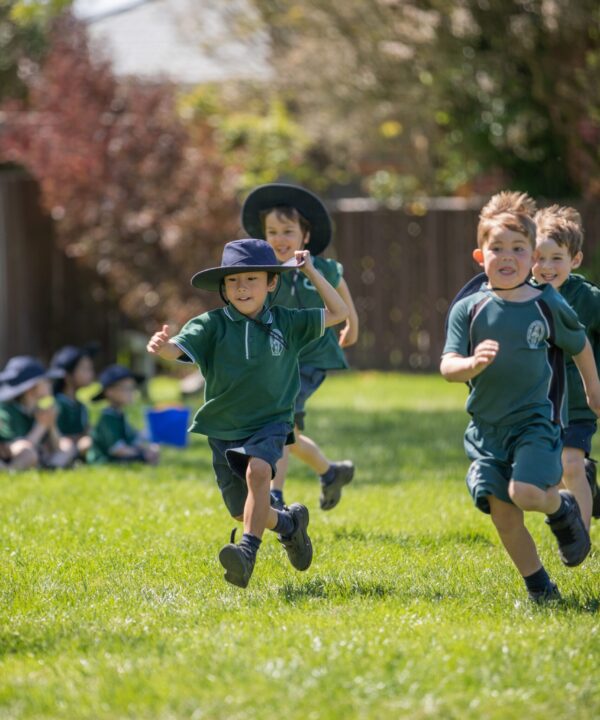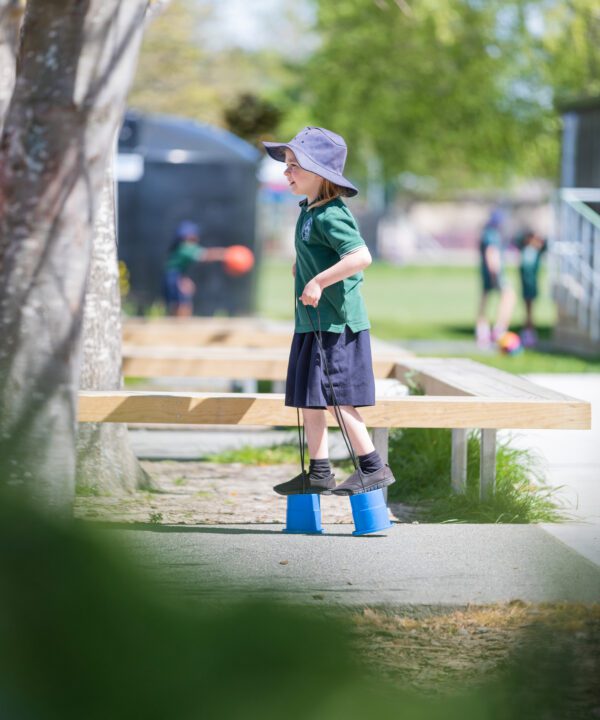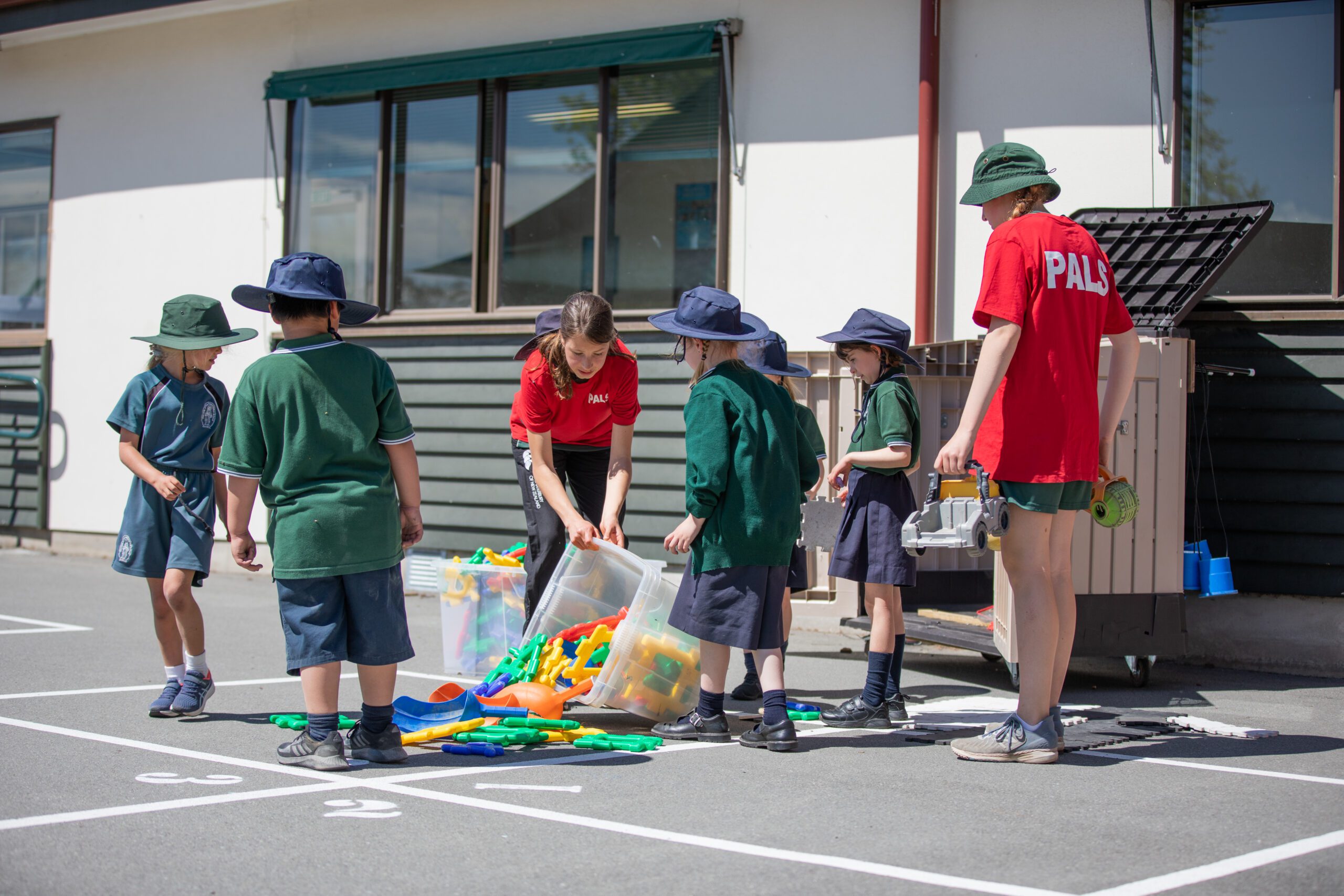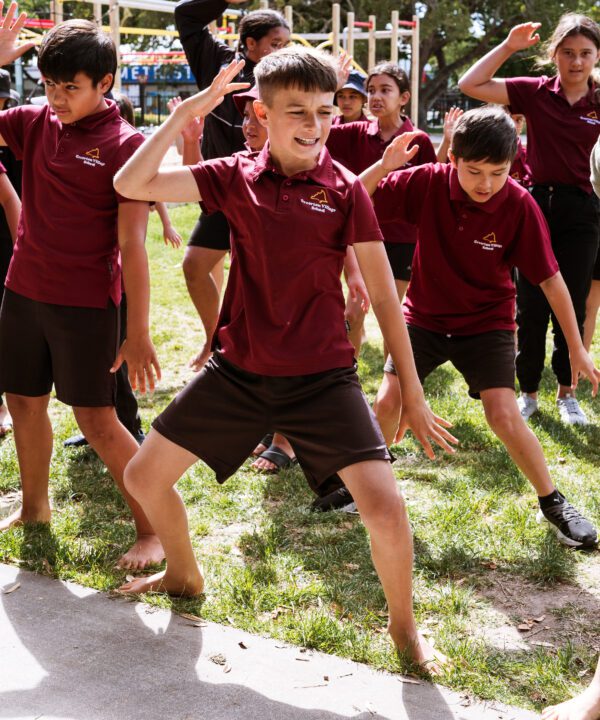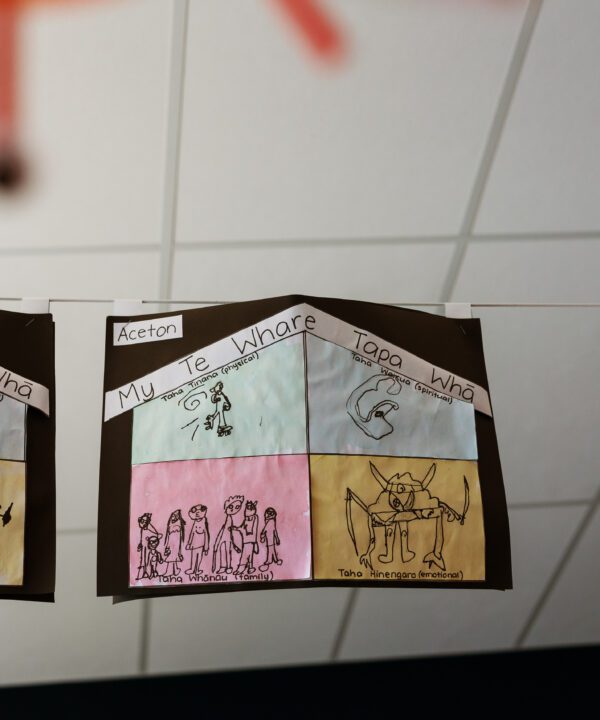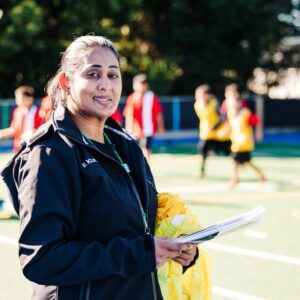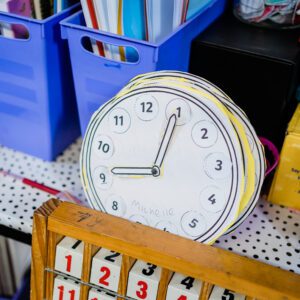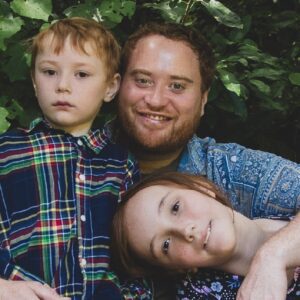Ricci Clark always knew she wanted to become a teacher because she didn’t enjoy school when she was growing up.
“I thought if there was somebody there who just knew me or who made me feel like I was worth something, then I wouldn’t have got myself into trouble.”
Ricci says hauora had no place in the classroom and physical education was about learning how to throw a ball at each other and stay out of the way of adults.
“So much learning comes out of physical activity, but sometimes we don’t value it because it looks like they are just playing around.”
“We never went into hauora at all – so learning about who you are and Te Whare Tapa Whā, we never went into that. Learning sports was not a fun thing and beep tests were a regular occurrence.”
Ricci is now a kaiako at Te Kura o Maarawaewae – Greerton Village School in the Bay of Plenty and her priority is putting the wellbeing of ākonga first.
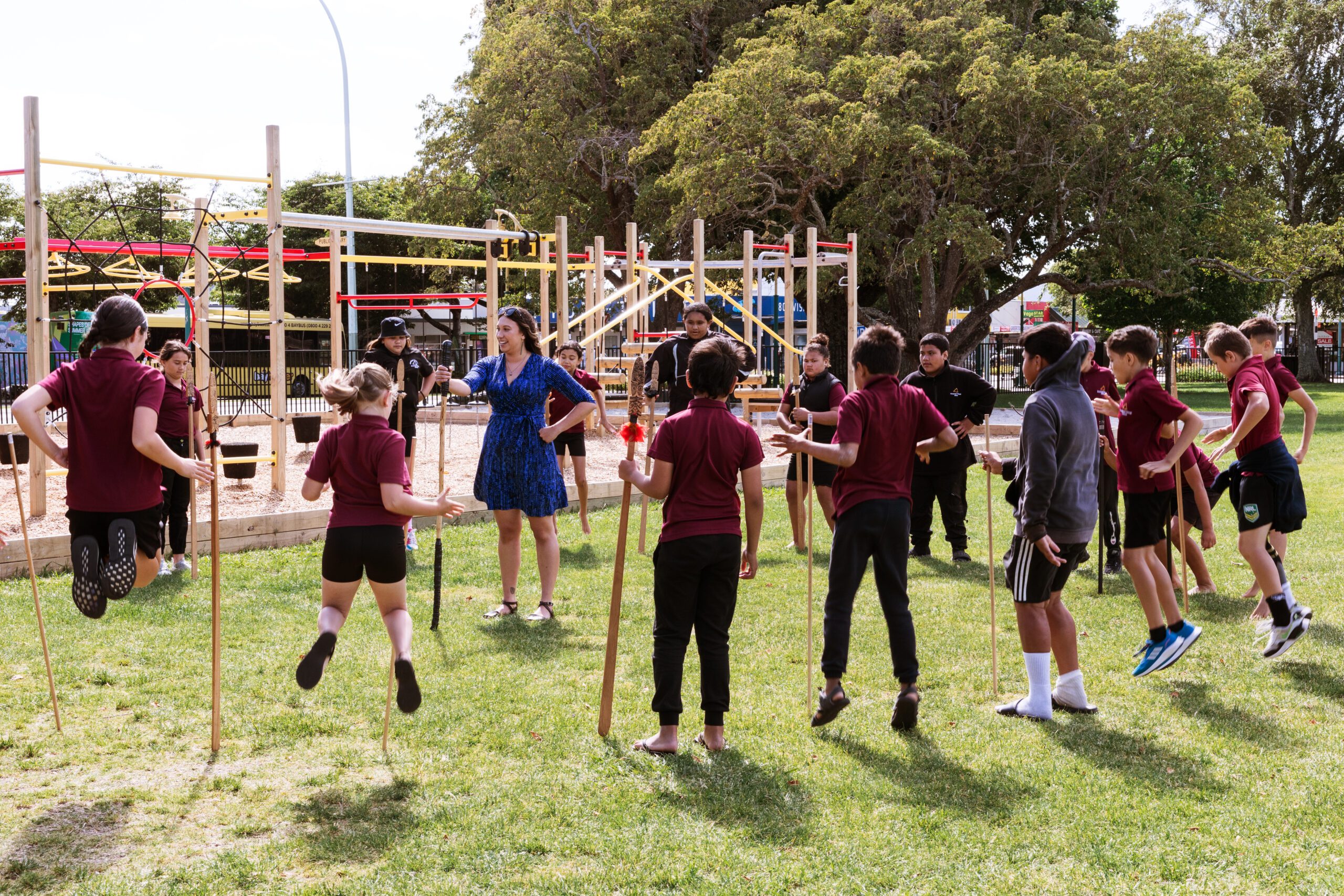
Hauora and being active is at the heart of Ricci’s bilingual classroom. Every day starts with kapa haka and ākonga get to go outside to move their bodies every 40 minutes or so. She’s always looking for new kēmu (games) to try and pūrākau (storytelling) and te ao Māori values are imbedded across all learning areas – including Health and Physical Education (HPE).
Ricci also ensures that tamariki with different abilities are always involved in physical activity in ways that work for them.
“It’s never just about getting a sweat up. Pretty much all our games involve mahi tahi – working together, looking after one another to get each other over the line. It’s about how we can work together to achieve the collective goal.
“So much learning comes out of physical activity, but sometimes we don’t value it because it looks like they are just playing around.”
Change is happening though, and there is a growing understanding of the role that quality PE and physical activity can play in enhancing learning and wellbeing.
Quality PE is student-centred and is about supporting students’ learning and holistic wellbeing through developing the physical, social and emotional skills they need to thrive. UNESCO’s recent call for investment in quality physical education recognises its ability to help address mental and physical health issues and inequality exacerbated by COVID-19.
Research shows that physical activity improves cognitive function, concentration and reasoning in tamariki and rangatahi, and that habits, attitudes, knowledge and behaviours developed early, impact future wellbeing.
Supporting teachers to be more confident in delivering quality HPE in Aotearoa is a focus of Healthy Active Learning. Backed by an initial investment of $47.6m and part of the Child Youth and Wellbeing Strategy, it is a partnership between Sport New Zealand, the Ministry of Education, and Te Whatu Ora Health New Zealand.
Currently supporting more than 900 schools and kura across the motu, Regional Sports Trusts and regional health and education agencies work together to help them create healthy and active learning environments and better connections to their local community. This includes providing free professional learning and development (PLD) for teachers.
Healthy Active Learning is locally led, so how and what support is offered looks different depending on the school, its teachers, students and community. It might be planning the HPE curriculum and using physical activity as a vehicle to deliver other learning areas, creating more inclusive cross-country events informed by student voice, PLD around delivering taonga tākaro (traditional Māori games) or fakamalohi sino (Pasifika games), or around Movewell – the games-centred resource distributed to all schools at the end of 2021.
Healthy Active Learning started at the beginning of 2020, and evaluation shows that physical activity is now more visible in school charters and strategic plans. Schools and teachers are dedicating more time to HPE, and the number of schools providing physical activity experiences which meet the needs of all students has risen from 61 percent in 2020 to 78 percent in 2022.

Letting all tamariki shine
One of those schools is Our Lady of the Assumption, a Years 1-8 special character school, in Hoon Hay, Christchurch.
Three years ago, prior to Healthy Active Learning, the demographic of the school’s ākonga was changing. Growing subdivisions were leading to families from different cultural backgrounds moving into the suburb, and there was a need to find ways to support the learning and wellbeing of those students.
Principal Janet Cummings says teachers understood the value of physical activity and PE for students, but what they offered didn’t really differ from the sports they were already playing outside of school such as hockey, football and netball.
So when the opportunity to be supported by Healthy Active Learning came along, Janet and lead HPE teacher Bridget Grant jumped on it.
Janet says the support of Sport Canterbury’s Healthy Active Learning team has been invaluable to the school, its teachers and students. “If they hadn’t been there, we would have been very similar to what we always were. They’ve been instrumental in change.”
The school now delivers a more varied sport and PE programme either on school grounds or in the local community, and delivered by kaiako themselves. Gymnastics, handball, lacrosse, volleyball, golf and marching are all included, with PLD delivered around all of it. There has also been support to co-design their Health and PE curriculum and integrate physical activity into other learning areas.
A highlight for Janet and Bridget was a session on marching – which saw teachers coming up with their own routines, and students enjoying something new.
“We were surprised by one of the young boys who led the marching team. If we hadn’t given him that opportunity, we would never have known that he had those skills,” says Janet. “The increased opportunities available for students are allowing them to shine.”
There has also been the introduction of a play pod thanks to Tū Manawa Active Aotearoa funding – a Sport NZ fund distributed through Regional Sports Trusts for the delivery of activities for tamariki and rangatahi.
Co-designed by the Physical Activity Leaders (PALS) – a group of senior students who the Healthy Active Learning team has also run leadership programmes for – it features stilts, moonhoppers and, in Bridget’s words, “big construction things”.
“Play is so important for their development – and it’s incidental exercise. Sometimes they don’t even realise they are exercising, or doing PE, or doing a sport. They are just enjoying themselves moving,” she says.
The PALS most recently designed and led a whole-school Commonwealth Games event, and 13-year-old Tim Daines says since joining the group he has found his skills as a leader.
“The leadership part of me has come out of the dark and really stood up.”
Tim says his favourite moment of the games was watching another senior student help a junior student with one of the activities. And then there was the tug of war.
“The little kids even got really involved in it. So much so that they ripped up the carpet – which had to be glued back down,” he says.
Bridget, as lead teacher, has worked especially closely with Healthy Active Learning facilitator Vicki Cowley. The model means Bridget can reach out to Vicki for support when she needs it and her team then cater to the unique needs of the teachers, students and school.

Photo: Antony&Mates.
“She’s been an amazing resource,” Bridget says. “She’s taught us to trust and value ourselves and know that actually we can do this.”
Vicki says the model allows change to come from within the school – ensuring it is sustainable and reflects the values of students and teachers.
“It’s the questions and conversations that the staff are having with each other – I just provide them with the platform for them to have those conversations to see what they want to do and what they want to achieve.”
Making PE fun for all
Back at Te Kura o Maarawaewae, Ricci says the support of the Sport Bay of Plenty Healthy Active Learning team has challenged her and her colleagues to create a more inclusive physical activity environment for all students.
“They’ve encouraged us to look through the lens of a child and ask what would this look like if I was maybe not as capable or confident, what would my peers think of me, how am I going to feel in that situation?”
There has also been in-class support during PE lessons, help with planning the HPE curriculum, and two offsite hauora PLD days for teachers in the region. Ricci’s colleague, Year 1 and 2 kaiako Tori Dunham, says Healthy Active Learning has transformed her relationship with PE.
Tori says she “completely hated” PE when she was at primary school and so, not knowing any different, didn’t want to inflict that onto her students. But her approach, and understanding of what it means to be active, has now changed. She has learnt that physical education is not just about learning how to throw a ball.
“Healthy Active Learning has given me a more meaningful way to incorporate games and for it to be seen as Health and Physical Education,” she says. “Last year there were a few teary moments with children not wanting to participate because I was taking the approach of ‘Okay, we’re learning to shoot today, we’re learning to pass, stand in this line, stand in this line’. And they’d drop the ball and feel embarrassed.
“This year it’s different. They might giggle with a friend but they’re able to laugh rather than get upset. It’s because we’re creating that sense of belonging and just not feeling judged. They feel more of a team.”
Tori has also been integrating physical activity into other learning areas.
“In one of the first meetings with [Healthy Active Learning advisor] Meg we sat down and thought of different ways we could adapt one game. You can do it as a warm-up in your writing, a warm-up in your maths. I hadn’t really thought about that,” she says. “And for the children who really like PE but dislike writing, it’s a way to make writing fun as well.”
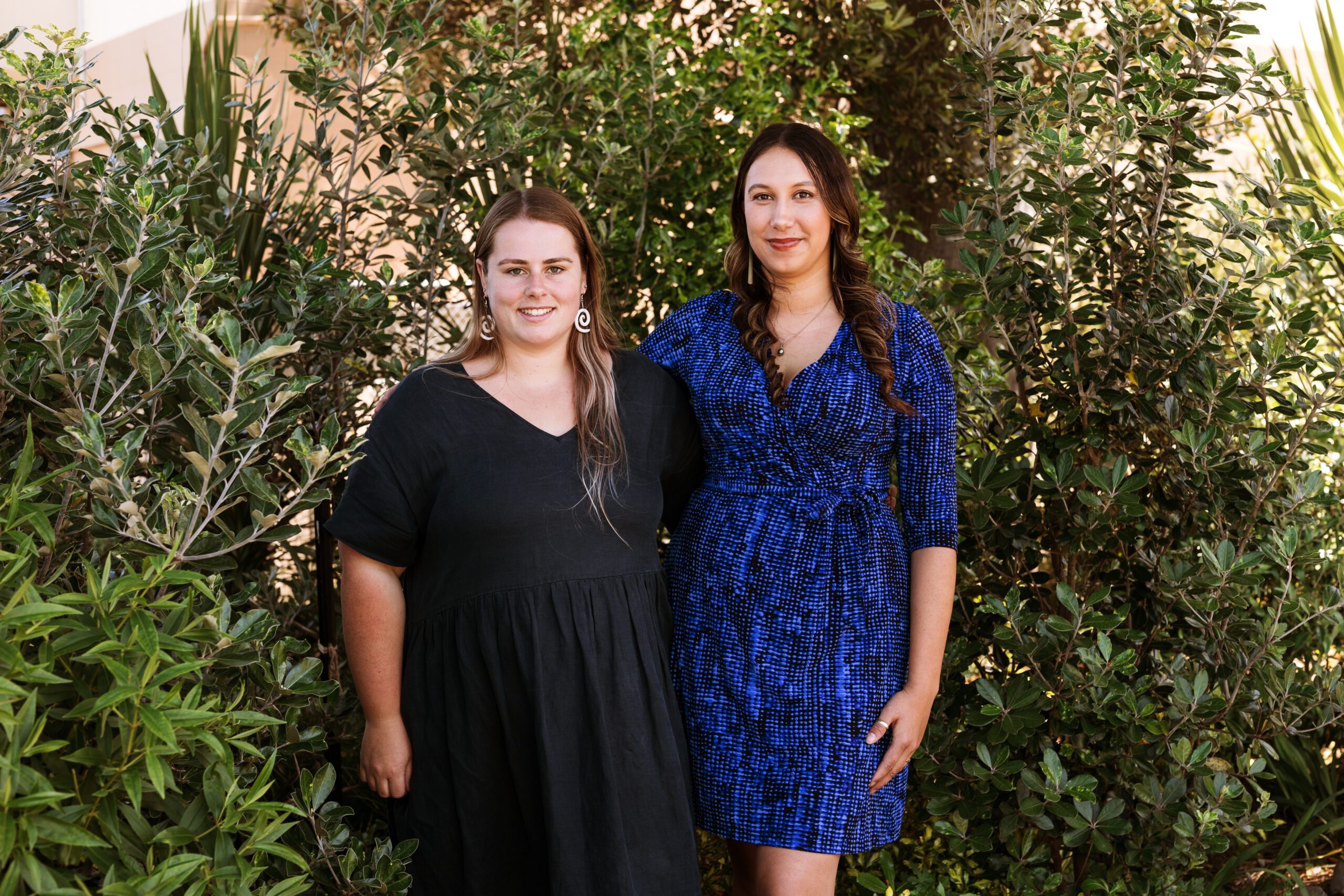
Ricci says the support from Healthy Active Learning has empowered her existing practice. Part of her job, as an in-school teacher for their kāhui ako, is to help her kaiako become more culturally responsive by sharing local stories and ideas to embed hauora into the classroom. She says she is passionate about showing how we can bring “teachings from our tīpuna” into different learning areas.
“They’ve come in and shown how you can look after this facet of your taha wairua, how you can talk to your kids and get them thinking about their kare ā-roto, their emotions,” she says.
“Just the simple way that they explained it to our kaiako, I think our teachers just grabbed it and went ‘Oh this is doable’. “I want people to see the value in it because I see the results. It’s right there in front of me every day. My kids are happy, they are attending school pretty much every day – it’s hardly ever that I have kids away. We love each other, we hug each other, we have fun together. We are like whānau.”



